
The effect of war trauma on Bruce Nakashima is the subject of “The Volunteer.” (Photos: Courtesy of David Brodie)
Must-see documentary about JA Vietnam War vet
packs a wallop of raw emotion, poignancy in its crisp 35-minute run time.
By Alex Luu, P.C. Contributor
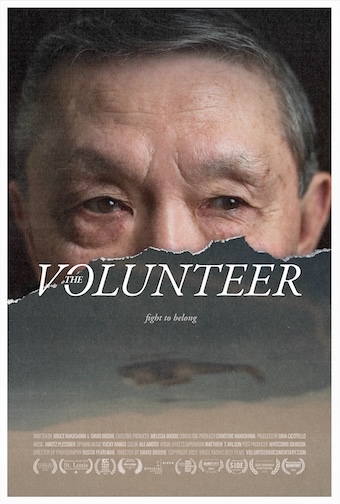
Poster for “The Volunteer”
Bruce Nakashima is a haunted man with multiple traumas. He is haunted by the trauma of being born in an incarceration camp for Japanese Americans during World War II. He is haunted by the trauma of what he saw and did as an Asian American soldier in the Vietnam War. He is haunted by the trauma of resembling the enemy on the battlefield.
In the pantheon of Vietnam War documentaries, none has presented a first-person perspective of the unfortunate dichotomy of having the same facial features/skin color as the “gooks” one is sent to fight and kill and the irreparable damage that war can wreak on one’s mind and heart.
In the 2023 documentary “The Volunteer” by director David Brodie, Nakashima gives his heartbreaking first-person account of how that dichotomy gave birth to a lifetime of anger, shame, guilt and pain. The film also traces the pivotal reunion between Nakashima and his war buddy LV Hendking, a reunion that to a great extent finally eases Nakashima’s collective trauma.
The origin story of “The Volunteer” is a testament to being in the right place at the right time, as well as the natural instinct of a documentarian. Brodie, whose career in the last 10 years has been split between editing commercials and documentaries for Netflix, had his first directing gig in 2018 on a national spot for Subaru that featured Meals on Wheels, the national program that delivers meals to senior citizens.
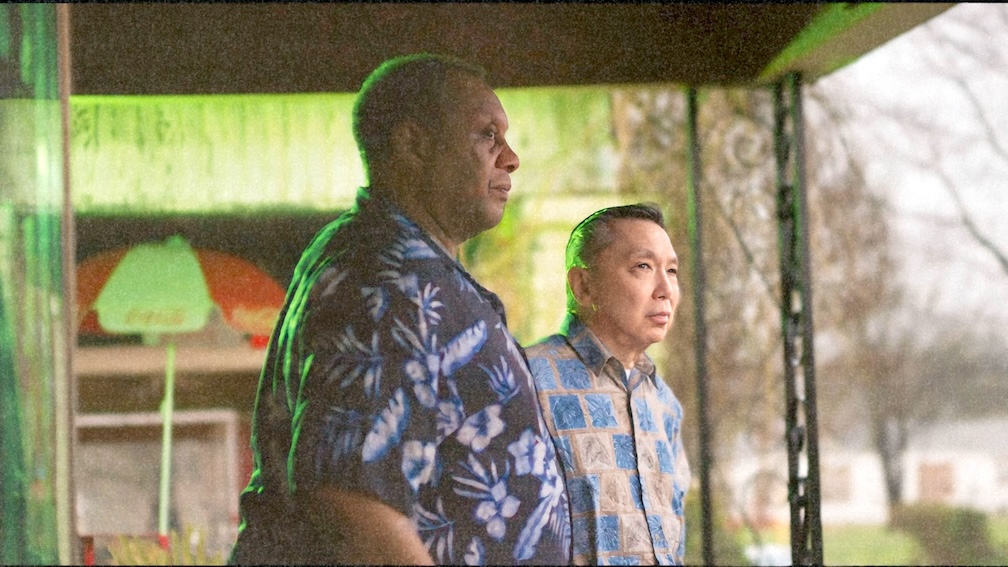
“The Volunteer” examines the debilitating effects of war and the healing nature of friendship on Vietnam War veterans LV Hendking and Bruce Nakashima.
“Every year, Subaru does a campaign where you buy a Subaru and a portion of the money goes to a charity,” said the Los Angeles-based Brodie. “I came across Bruce and Chris Gordon-Clarke, who’s a veteran and was delivering food to Bruce. So, I interviewed them for the campaign. Bruce mentioned a bit about his service in Vietnam and dealing with that and his sense of isolation and how he didn’t really talk to people. I knew he had a lot more going on.”
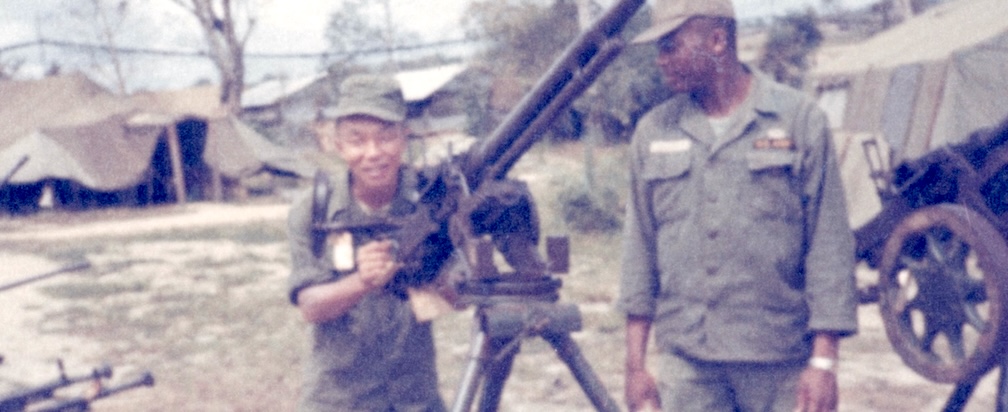
Bruce Nakashima and LV Hendking with an abandoned North Vietnamese machine gun
Through Nakashima’s intermittent peppering of bits and pieces of his service in Vietnam during the initial filming of the Subaru spot, Brodie instinctively knew that there might be something else further and deeper that could be explored. So, he maintained contact with both men.

Filmmaker David Brodie in a lighthearted moment while interviewing Bruce Nakashima on location at the Vietnam War veteran’s Santa Monica, Calif., apartment
“I reached out to both men and got lunch with them and also got involved with the Meals on Wheels West program that services Santa Monica, Venice and other parts of the Westside,” Brodie said. “I started delivering meals and got to know Bruce better through that and heard more and more of his story.”
Brodie’s burgeoning friendship with Nakashima led to a gradual trust on the latter’s part in being able to open up. Even though Nakashima had a lot to get off his chest, the whole process of sitting down and revealing the deepest wounds and scars of the Vietnam War did not come naturally. Therefore, Brodie gently suggested a more visual way to hopefully get at the heart of some difficult feelings.
“I just asked him to take out some of his old photos and have him talk about them and see what happens,” Brodie remembered. “That first sit down was about two hours, and it was emotionally devastating. He talked about the hypocrisy of his father serving overseas while the family was incarcerated.”
Much like the photos in the photo-sharing scene in the film, the expression on Nakashima’s face is worth a thousand words — he purses his lips and winces in discomfort, tired eyes almost reliving every microstory behind the weathered black-and-white photos. Nakashima pauses on a picture of himself, barely 3 years old and offers in a tone that is at once nostalgic and filled with frustration.
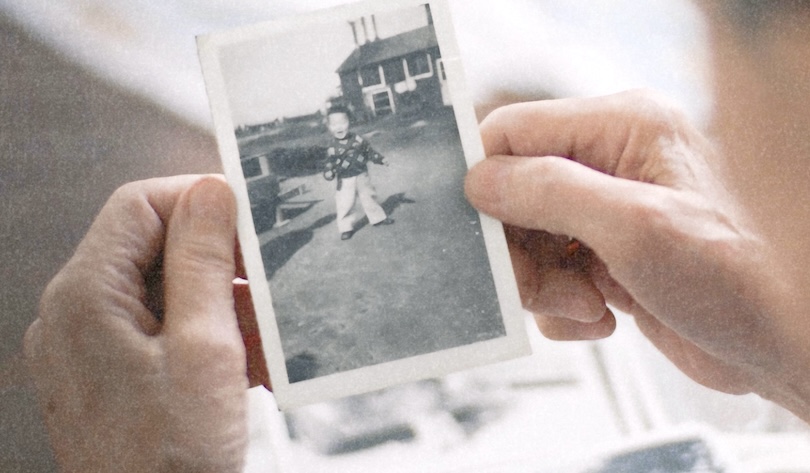
Bruce Nakashima looks at a photo of himself as a toddler while incarcerated at the Rohwer WRA Center
“There I am. I was born in Camp Rohwer, Ark. They thought that we were a threat to the United States. So, they, uh, put all the Japanese Americans in these camps,” he recalled. Sifting through photos of his father in combat uniform in World War II, the irony of it all does not escape Nakashima. “My dad was fighting in, uh, Germany and Italy, and we over here.”
It was also at that first sit-down when Nakashima first mentioned a guy named LV. Brodie was immediately taken aback at the casualness with which Nakashima brought up the name.
“I was thinking, ‘Who is this guy LV?’” Brodie recalled. “He would mention LV, and I wasn’t sure if LV was going to be just a secondary or minor part of the story or what, but I knew there was something interesting to explore about their friendship.”
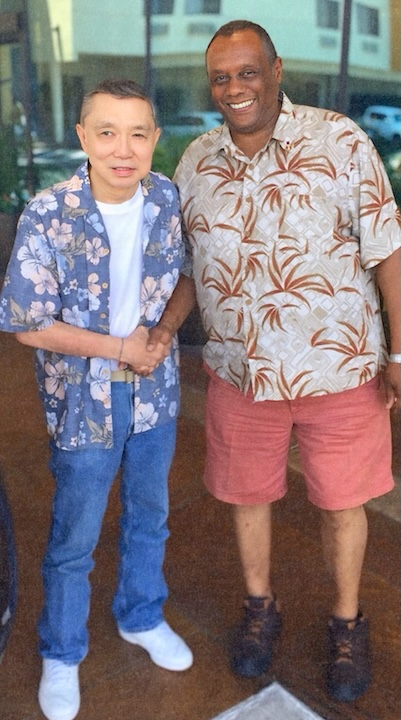
Nakashima and Hendking in the present
Nakashima and LV Hendking met in Fort Benning, Ga. (now Fort Moore), when they were in paratrooper school and immediately hit it off. As Nakashima recalls in a light-hearted moment in the film, “I remember he was a big old Black kid, big and strong. Until I got in the service, I never was in contact with Black people.”
It was the same with LV in that he had never met any Asians and never saw any growing up in Alabama. Whether it was fate or just pure luck, the Japanese American from Los Angeles and the African American from Birmingham formed an immediate bond that transcended racial barriers and developed into a brotherhood that included nicknames for each other. Nakashima was “Knock,” and LV was “Hindu” in lieu of his last name, Hendking.
As filming progressed on “The Volunteer,” Brodie would gradually find out that part of Nakashima’s trauma stemmed from the fact that his external Asian features quickly became a liability that invited racist comments from some members of his platoon.
A fellow officer asked Nakashima to don a pair of black pajamas so he could take a picture of him and say that he had captured an enemy, a VC (Viet Cong). Nakashima was angered by the racist undertones of the officer’s request, but there was nothing he could do about it.
There was another time when a fellow soldier suggested they “kill all these f***ing gooks.” The not-so-subtle inference that Nakashima can be categorized as a gook was not lost on him and sowed a potent seed of discontent wherein the question, “What am I doing here then?” invaded his mind.
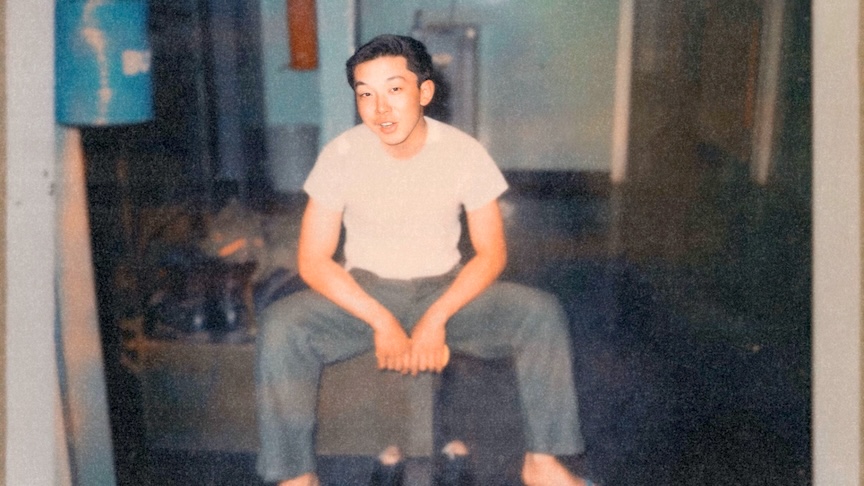
Bruce Nakashima as a young soldier, taken during training camp
As stressful as it was to deal with the intermittent racist comments and jokes, the core of Nakashima’s deep-rooted PTSD lay in what he referred to as “the incident” on a helicopter. What actually happened in this incident had done so much damage to Nakashima’s psyche that the mere thought of recounting it sends him on a downward spiral. This painful reticence is captured midway in the film when Nakashima starts the story and then abruptly stops, as if struggling to breathe.
“It was hard for him to talk about,” Brodie said. “He was unsure whether he wanted to talk about it. It was so raw and emotional and terrifying for him.”
There were actually a few more times that Brodie had to stop filming due to Nakashima’s inability to continue. It wasn’t until the reunion between Nakashima and LV that the former was able to reveal details about what actually transpired on the helicopter.
Being in the Subaru commercial played a key role in Nakashima and LV’s reunion. “After it aired, a lot of people recognized Bruce, like some of the people he went to school with started saying, ‘Hey, that’s Bruce!’ and stuff like that,” Brodie said. “It really sparked him to get on Facebook and look for LV.” Nakashima found LV’s niece and reached out to her, and she contacted LV.
The reunion between Nakashima and LV is at once powerful and transformative, and it serves as the final missing piece of the puzzle of what has haunted Nakashima all these years.
In what is probably the most heartrending scene from the film, Nakashima immediately lets his guard down and falls into LV’s arms and cries. LV embraces his long-lost friend and comforts him like a parent would a wounded child. Their embrace is long and cathartic, and it is more than apparent that Nakashima has found home again after being lost for so many years.
“When LV walked into Bruce’s apartment and the way Bruce hugged him, I knew immediately that was the central arc, and it served as the foundation for the rest of the film,” Brodie said. “With LV being there, it unlocked Bruce’s ability to go back and really talk about what happened.”
Similar to a surprise reveal at the end of a mystery, Nakashima finally recounts “the incident” in a shocking and gut-wrenching scene near the film’s finish. Sitting next to LV, Nakashima finally has the strength to confront the specter that has haunted him since his early 20s.
After getting ambushed, he, LV and a few other soldiers were medevac’d out of enemy fire. LV was in and out of consciousness, having been shot multiple times. A couple of VC soldiers were also captured and put onto the helicopter alongside Nakashima and LV. In midflight before they reached the field hospital, one of the soldiers who was manning the machine gun yelled out, “All f****ing gooks. F*** ’em!” and threw the VCs out of the helicopter.
Seeing the prisoners fall to their deaths stunned Nakashima, but what happened next absolutely horrified him. The gunner grabbed him and started pushing him out of the helicopter. In that one instant, in the eyes of the racist gunner, Nakashima was not an American soldier on the side of the U.S. He was not on the same side as the gunner. He was the enemy, the gook. A few seconds more, and Nakashima would have plunged to his death.
LV woke up and grabbed Nakashima and said to the gunner, “He’s my friend, he’s my friend, he’s not the enemy!” LV pulled Nakashima back into the helicopter, saving his life.
The full reveal of “the incident” proved to be healing for Nakashima. Akin to a frozen pipe that finally cracks, telling this last part of his story was a cathartic release of decades of pent-up emotions and memories. As if a sign from the heavens, a heavy downpour arrived right at the end of Nakashima’s testimonial.
“There was a storm warning all day, and we had this really difficult emotional shoot,” Brodie remembered. “Right when they had finished their conversation about the helicopter incident, they went outside and the heavy rain came down. It played out exactly the way you see it in the film.”
The indelible image of Nakashima and LV standing side-by-side on the porch and watching the downpour is pure poetry, the rain almost a metaphor of the washing away of deeply ingrained scars and pain — physical and psychological.
This led to Nakashima being able to reconnect and reconcile with people from his past. He started talking to some of his family members who he hadn’t talked to in many years and, according to Brodie, he definitely “mended some broken fences.”
“The Volunteer” saves another gut punch at the end that won’t be revealed here.
Brodie got to know Nakashima’s sister, Christine, and ended up asking her to be a consulting producer on the film. “She is an incredible person, really bright and genuine and kind,” Brodie said. “I just thought it was important that someone from his family was empowered to say, ‘This isn’t good,’ or ‘This is misleading,’ so I was sending her stuff to watch, and we would talk about it and give little helpful insights.
“I still felt that it was not my story to tell even though I was grateful that he trusted me,” Brodie continued. “I felt that I was just helping him tell his story, and the less of me the better. It was really fantastic to have her be part of the process and still be within the family’s control.”
In “The Volunteer,” we are reminded of the lower depths of humanity as well as its flip side of redemption, much like how Bruce Nakashima and LV Hendking are opposite sides of the same coin, blood brothers whose lives are forever connected.
The trailer for “The Volunteer” can be seen at tinyurl.com/2k3d5486 and is available for rental on Apple TV+ and Amazon’s Prime Video.
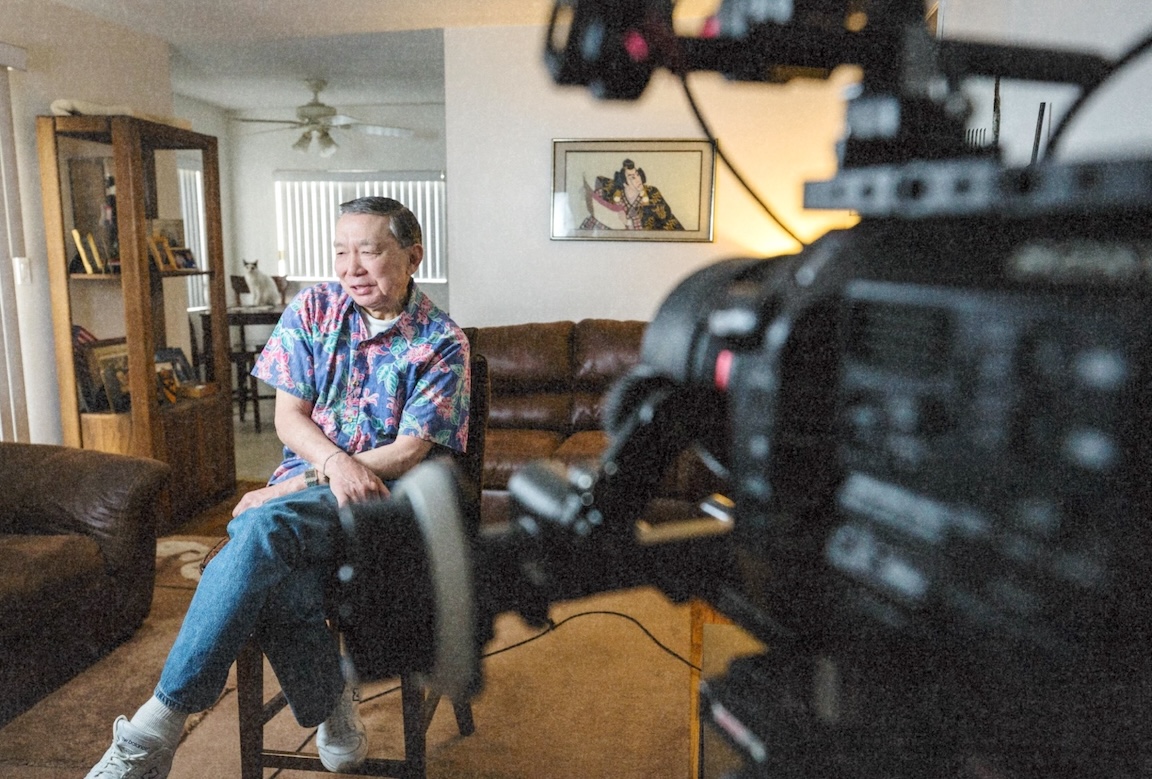
Bruce Nakashima as he is being recorded for ”The Volunteer”



